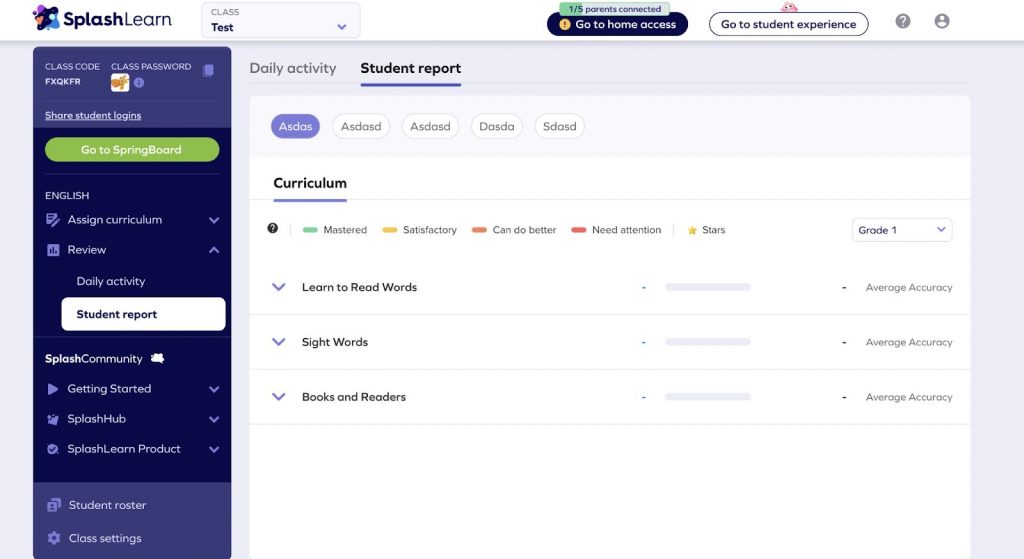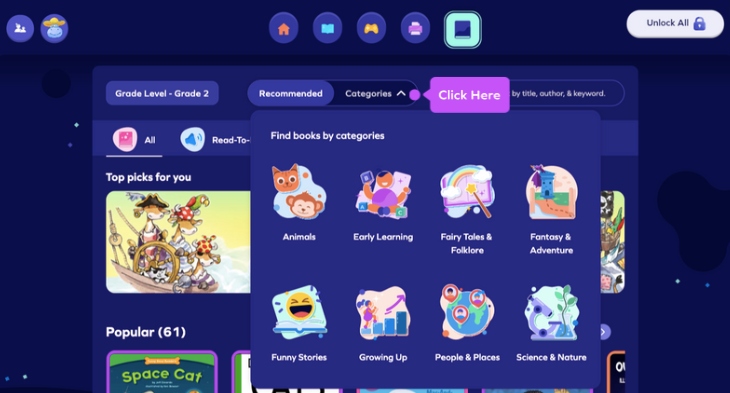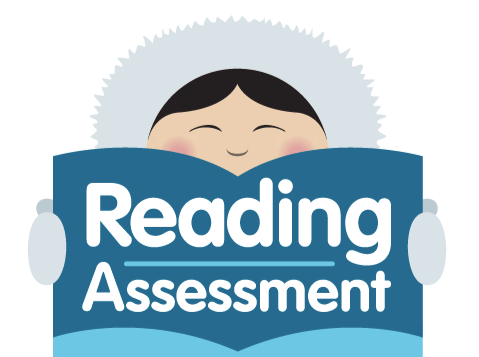As teachers, we often wonder how best to support our students’ reading skills. Reading assessments are like a roadmap, showing us where each student excels and where they might need extra help. These tools are crucial for tailoring our lessons to fit the needs of every child in our classroom. In this blog, we’ll dive into different types of reading assessments and discuss how they can make a real difference in our teaching and our students’ learning.
Math & ELA | PreK To Grade 5
Kids see fun.
You see real learning outcomes.
Watch your kids fall in love with math & reading through our scientifically designed curriculum.
Parents, try for free Teachers, use for free
What is Reading Assessment?
Reading assessment is the process of evaluating a student’s reading skills to understand their strengths and areas where they need improvement. These assessments provide valuable insights into how well students can understand and interpret text, recognize words, and use vocabulary.
With reading evaluation, teachers can identify specific skills that need development, allowing them to tailor their instruction to better meet the needs of each student. Ultimately, reading assessments help ensure that all students are on the right track to becoming proficient readers.
8 Types of Reading Assessments by Skills
1. Phonemic Awareness
- Comprehensive Test of Phonological Processing (CTOPP) The CTOPP is a detailed test that helps us understand a student’s phonological processing skills. This means it looks at how well students can hear, remember, and quickly name sounds. It’s especially useful for identifying students who might struggle with reading because of difficulties with sound awareness.
- Phonological Awareness Test (PAT) The PAT measures several key areas of phonological awareness, which is crucial for early reading skills. It checks how well students can rhyme, break words into smaller sounds, and blend sounds together. These skills are foundational for reading success, making this test a great kindergarten reading assessment tool.
- Yopp-Singer Test of Phoneme Segmentation The Yopp-Singer Test is focused on one specific skill: phoneme segmentation. This means it evaluates how well students can break words down into individual sounds. For example, taking the word “cat” and identifying the sounds /c/, /a/, and /t/. This test is straightforward and quick, making it easy to administer in a classroom setting.
2. Phonics/Decoding
- Dynamic Indicators of Basic Early Literacy Skills (DIBELS) DIBELS is a set of short, one-minute fluency measures used to monitor the development of early reading skills. It includes several components, such as letter naming fluency, phoneme segmentation, nonsense word fluency, and oral reading fluency.
The main purpose of DIBELS is to provide quick and reliable indicators of a student’s progress in acquiring the basic skills of reading. It’s an excellent tool for early reading assessment, helping teachers identify students who need additional support.
- Texas Primary Reading Inventory (TPRI) The TPRI assesses a variety of reading skills, with a strong focus on phonics and decoding. It includes tasks like blending sounds together and segmenting words into individual sounds.
This decoding assessment helps teachers understand where a student stands in their ability to decode words, which is crucial for reading fluency and comprehension. This assessment is particularly useful for identifying specific phonics skills that need to be reinforced.
- Woodcock Reading Mastery Tests (WRMT) The WRMT includes several subtests that focus on different aspects of reading, such as word attack and word identification. Word attack measures a student’s ability to sound out unfamiliar words, while word identification assesses their ability to recognize common words by sight. These subtests provide detailed insights into a student’s decoding skills and are valuable for tailoring instruction to meet individual needs.
3. Fluency
- DIBELS Oral Reading Fluency (ORF) The DIBELS Oral Reading Fluency (ORF) assessment measures how many words a student can read correctly in one minute from a grade-level passage. This is a key indicator of reading fluency, showing how smoothly and accurately a student can read.
By regularly using ORF, teachers can monitor progress and identify students who may need additional support to improve their reading speed and accuracy. This makes DIBELS ORF a valuable tool in elementary reading assessments.
- Curriculum-Based Measurement (CBM) CBM is a versatile tool used to assess reading fluency by having students read passages aloud within a set time. Teachers use CBM to track progress over time, ensuring that students are improving in their reading fluency. This type of assessment is easy to administer and provides immediate feedback, making it a popular choice for frequent monitoring in classrooms. Its practical application helps in tailoring instruction to meet each student’s needs.
- Gray Oral Reading Tests (GORT) The Gray Oral Reading Tests (GORT) evaluate both reading fluency and comprehension. Students are timed as they read passages aloud, and then they answer questions about what they read. This assessment provides a comprehensive view of a student’s reading abilities, combining fluency with understanding. GORT is an excellent choice for assessments for reading, as it gives a deeper insight into how well students can read smoothly and understand the text.
Related Reading: Best Reading Fluency Activities for Early Learners
4. Vocabulary
- Peabody Picture Vocabulary Test (PPVT) The Peabody Picture Vocabulary Test (PPVT) measures a student’s receptive vocabulary, which is their ability to understand spoken words. In this assessment, students are shown a series of pictures and asked to point to the picture that corresponds to a word spoken by the examiner.
This method helps teachers gauge how well students can connect spoken words with their meanings, providing a clear picture of their vocabulary development. It’s a straightforward and effective early reading assessment tool.
- Gates-MacGinitie Reading Tests (GMRT) The Gates-MacGinitie Reading Tests (GMRT) include vocabulary subtests that assess students’ word knowledge in context. During the test, students are asked to choose the correct meaning of words used in sentences.
This assessment provides a comprehensive view of a student’s vocabulary skills, helping teachers understand how well students can apply their word knowledge to comprehend text. GMRT is widely used in elementary reading assessments to track vocabulary development over time.
- Expressive Vocabulary Test (EVT) The Expressive Vocabulary Test (EVT) measures a student’s ability to produce vocabulary words. In this assessment, students are asked to name pictures or provide synonyms for given words. This test evaluates how well students can recall and use words, offering insights into their expressive language skills.
5. Comprehension
- Gates-MacGinitie Reading Tests (GMRT) The comprehension subtests of the Gates-MacGinitie Reading Tests (GMRT) focus on evaluating how well students understand what they read. During these tests, students read passages and answer questions that assess their ability to grasp main ideas, make inferences, and understand vocabulary in context.
- Iowa Test of Basic Skills (ITBS) The Iowa Test of Basic Skills (ITBS) includes comprehensive reading sections that assess students’ understanding of various types of texts, from fiction to informational passages. The test measures how well students can recall details, understand main ideas, draw conclusions, and interpret information.
- Qualitative Reading Inventory (QRI) The Qualitative Reading Inventory (QRI) provides diagnostic information about a student’s reading comprehension and their ability to read different types of texts. This assessment involves students reading passages aloud and then answering comprehension questions. The QRI helps teachers identify specific strengths and weaknesses in students’ comprehension, such as difficulties with specific text types or comprehension strategies.
Related Reading: Best Reading Comprehension Activities for Kids
6. Spelling
- Test of Written Spelling (TWS) The Test of Written Spelling (TWS) assesses a student’s spelling ability through a series of dictated words. Students write down the words as they hear them, allowing teachers to evaluate their proficiency in spelling. This method provides a clear picture of which words students can spell correctly and which they struggle with, helping teachers to identify specific areas where students need more practice.
- Spelling Inventory A Spelling Inventory focuses on assessing students’ knowledge of spelling patterns and rules. During this assessment, students are asked to spell a list of words that represent different spelling patterns and rules. The results help teachers understand how well students grasp these patterns and apply them in their writing. This information is crucial for planning instruction that targets specific spelling skills and supports overall literacy development.
- Words Their Way Spelling Inventory The Words Their Way Spelling Inventory evaluates students’ spelling development stages. This assessment categorizes words into different stages of spelling development, from letter-sound correspondence to more complex patterns like prefixes and suffixes. By analyzing how students spell these words, teachers can determine which developmental stage each student is in.
Related Reading: How to Teach Spelling to Kids
7. Writing
- Test of Written Language (TOWL): The Test of Written Language (TOWL) is a comprehensive assessment that evaluates various aspects of a student’s writing ability. It includes subtests that measure skills like sentence combining, contextual conventions, and story composition. These subtests provide a detailed look at how well students can organize their thoughts, use grammar and punctuation correctly, and create coherent narratives. By using TOWL, teachers can identify specific areas of strength and areas needing improvement in their students’ writing.
- Writing Samples: Collecting writing samples is a practical and informative way for teachers to assess students’ writing skills. Teachers ask students to complete writing tasks, such as essays, stories, or reports, and then evaluate these samples based on specific criteria. This method allows teachers to see students’ writing in a natural context, providing insights into their ability to organize ideas, use language effectively, and follow writing conventions.
- Six Traits Writing Assessment The Six Traits Writing Assessment analyzes writing based on six key traits: ideas, organization, voice, word choice, sentence fluency, and conventions. Each trait represents a different aspect of effective writing, from the clarity of ideas to the use of correct grammar and punctuation. By focusing on these traits, teachers can provide specific feedback and instruction to help students improve their writing skills.
Related Reading: Best Writing Activities for Kids
8. Early Reading Skills
- Early Reading Diagnostic Assessment (ERDA): The Early Reading Diagnostic Assessment (ERDA) evaluates a range of early literacy skills, including phonemic awareness, phonics, vocabulary, and comprehension. This assessment helps teachers understand how well young students develop the foundational reading skills.
- Test of Early Reading Ability (TERA): The Test of Early Reading Ability (TERA) measures a young child’s ability to understand printed language through various tasks. It assesses skills such as recognizing letters and words, understanding print concepts, and comprehending simple texts.
- Get Ready to Read! Screening Tool The Get Ready to Read! Screening Tool is designed to evaluate pre-reading skills in children. This tool assesses skills such as letter knowledge, phonemic awareness, and the ability to recognize simple words. By using this screening tool, teachers can identify children needing additional support before they start formal reading instruction.
Related Reading: How to Teach Kids to Read
How to Use SplashLearn as a Reading Assessment Tool?
SplashLearn is a comprehensive tool that can help you assess and improve your students’ reading skills, from phonics to reading comprehension. Here’s how you can use SplashLearn in your classroom to support your students’ reading journey:
1. Phonics and Early Reading Skills SplashLearn offers a variety of interactive games that focus on phonics and early reading skills. These games help students practice sound matching, blending, and segmenting, essential for developing strong reading foundations. By playing these games, students can reinforce their phonemic awareness and phonics skills in a fun and engaging way.
Try Here
2. Assigning Worksheets to Reinforce Concepts You can assign specific worksheets on SplashLearn to reinforce the concepts taught in class. These worksheets cover various reading skills, from basic letter sounds to more advanced phonics patterns. Assigning worksheets allows students to practice what they’ve learned and helps you see their understanding of the material.
Get Started Here
3. Tracking Progress

SplashLearn’s progress tracking features let you monitor how well each student is doing. The platform provides detailed reports on student performance, showing which areas they excel in and where they might need more help. This ongoing assessment is crucial for identifying and addressing learning gaps promptly.
4. Personalized Support SplashLearn’s algorithm analyzes student performance and identifies areas where they need the most support. This allows you to provide targeted instruction and practice for each student, ensuring they get the help they need to succeed. For example, if a student is struggling with blending sounds, the platform will suggest specific activities to improve this skill.
5. Digital Library for Reading Levels

SplashLearn’s digital library is a fantastic resource for assessing and improving reading comprehension. You can assign books to students and track their reading levels. The library offers a wide range of books that cater to different reading levels, making it easy to find appropriate materials for each student. By monitoring their progress with these books, you can see how well they understand what they read and adjust your instruction accordingly.
6. Comprehensive Assessment Using SplashLearn, you can conduct a comprehensive assessment of your students’ reading abilities. The combination of games, worksheets, progress tracking, and the digital library gives you a complete picture of each student’s reading skills. This holistic approach ensures that you can support your students effectively at every stage of their reading development.
How to Select a Reading Assessment?
Factors to Consider
- Identify the skills to assess (e.g., phonics, fluency).
- Ensure the tool is appropriate for your students’ grade.
- Choose assessments that are easy to administer and score.
- Select proven, accurate tools.
- Consider the time required for administration.
Matching to Student Needs
- Pick tools that highlight strengths and weaknesses.
- Use assessments with detailed feedback.
- Ensure the tool accommodates all students.
Tips for Implementation
- Know the tool well before use.
- Administer assessments uniformly.
- Minimize distractions.
- Analyze results to guide teaching.
- Assess frequently to track progress.
Conclusion
Effective reading assessment tools are essential for understanding and supporting your students’ reading development. They provide crucial insights into each student’s reading abilities, strengths, and areas needing improvement. By carefully selecting and utilizing assessment tools, you can tailor your instruction to meet each student’s unique needs. This ensures every student has the best chance to become a proficient reader, fostering a lifelong love of learning and literacy.
Related Reading: How to Use Formative Assessment in Your Classroom
Frequently Asked Questions (FAQs)
What tools are commonly used for kindergarten reading assessments?
Common tools for kindergarten reading assessments include DIBELS, PALS, and the Get Ready to Read! Screening Tool, which evaluate foundational literacy skills.
How often should reading assessments be conducted in elementary schools?
Reading assessments should be conducted regularly, such as at the beginning of the school year, mid-year, and end of the year, to monitor progress and adjust instruction as needed.
What are the 5 pillars of reading assessment?
The 5 pillars of reading assessment are phonemic awareness, phonics, fluency, vocabulary, and comprehension. These components are essential for evaluating and supporting a student’s reading development.






























